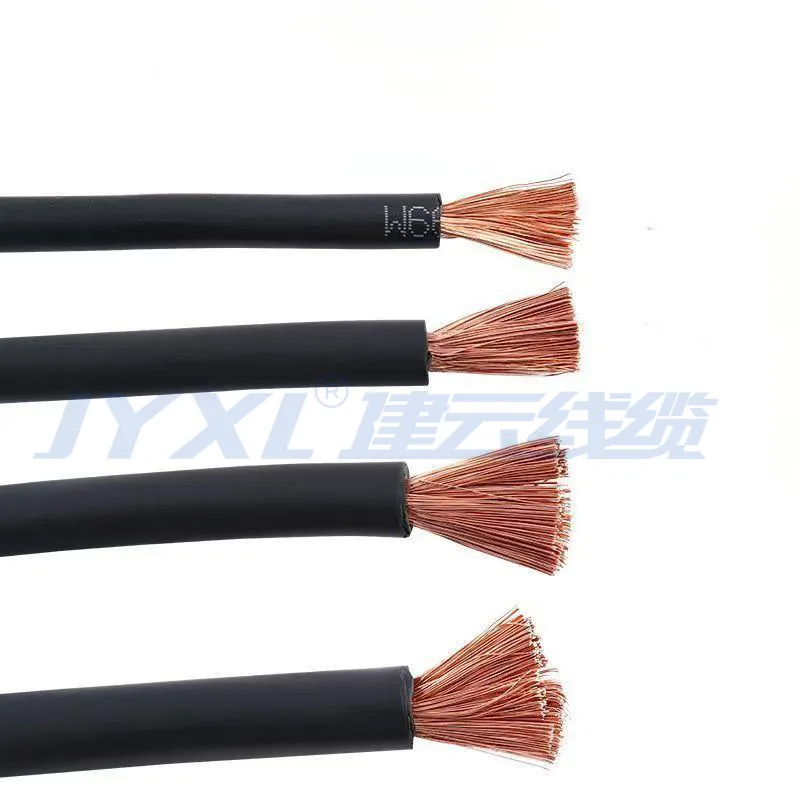Time: 2025-05-21 16:08:28 Source: Henan Province Jianyun Cable Co., Ltd.
4 AWG wire refers to a conductor sized according to the American Wire Gauge (AWG) system, a standardized method for measuring wire diameters in North America. The AWG system assigns smaller gauge numbers to thicker wires with greater current-carrying capacity. A 4 AWG wire is a relatively large conductor, suitable for high-current, low-voltage applications in residential, commercial, and industrial settings. It is commonly made of copper or aluminum, with copper offering higher conductivity and aluminum providing cost savings for larger installations. 4 AWG wire is used in applications requiring significant power delivery, such as service entrances or heavy equipment, as discussed in prior articles on AWG, 2 AWG vs. 2/0 AWG, and medium voltage cables.

4 AWG wire has specific physical and electrical properties that define its performance:
These specifications make 4 AWG wire versatile for high-current applications, similar to conductors discussed in T90 vs. TW75 and RW90 vs. RWU90 articles.
Ampacity refers to the maximum current a wire can safely carry without exceeding its temperature rating. The ampacity of 4 AWG wire depends on the conductor material, insulation type, ambient temperature, and installation conditions (e.g., conduit, free air). Typical ampacity values at 30°C ambient temperature are:
These values assume three current-carrying conductors in a conduit. Ampacity may increase in free air (e.g., up to 125 amps for copper at 90°C) or decrease with higher ambient temperatures or multiple conductors. Derating factors apply for bundled conductors or elevated temperatures, as noted in discussions on conductor sizing and RW90 conduit requirements.
The cross-sectional area of 4 AWG wire is approximately 21.15 mm², as calculated from its circular mil area (41,740 circular mils, where 1 circular mil = 0.0005067 mm²). This makes 4 AWG equivalent to a metric conductor size of about 21 mm², though standard metric sizes may use 25 mm² for similar applications. The mm² equivalent is critical for international projects or when comparing AWG to metric systems, as discussed in prior articles on Philippine vs. American THHN wires and conductor sizing.
4 AWG wire is used in applications requiring high current and low voltage, similar to conductors in T90, RW90, and medium voltage cable discussions:
These applications highlight 4 AWG wire’s role in robust electrical systems.
The table below summarizes the key characteristics of 4 AWG wire:
| Characteristic | Details |
|---|---|
| Conductor Material | Copper or aluminum |
| Diameter | 5.189 mm (0.2043 inches) |
| Cross-Sectional Area | 21.15 mm² (41,740 circular mils) |
| Ampacity (Copper, 90°C) | 95 amps (conduit, 30°C ambient) |
| Ampacity (Aluminum, 90°C) | 75 amps (conduit, 30°C ambient) |
| Voltage Rating | 600V |
| Applications | Service entrances, subpanels, heavy appliances |
Choosing 4 AWG wire ensures optimal performance and safety:
These steps align with selecting reliable conductors like T90, RW90, or XHHW.
4 AWG wire, with a cross-sectional area of approximately 21.15 mm², is a versatile conductor for high-current, low-voltage applications, offering ampacities of 95 amps (copper) or 75 amps (aluminum) at 90°C. Available in copper or aluminum with insulation like THHN, XHHW, or RW90, it is ideal for service entrances, subpanels, heavy appliances, and renewable energy systems. By assessing current needs, conductor material, insulation type, and installation conditions, users can select 4 AWG wire for efficient and safe power delivery, building on discussions of AWG, 2 AWG vs. 2/0 AWG, T90 vs. TW75, RW90 vs. RWU90, Philippine vs. American THHN wires, medium voltage cables, ACAR, and ACSR. Professional consultation ensures the reliability of 4 AWG wire installations, supporting robust electrical systems across various sectors.